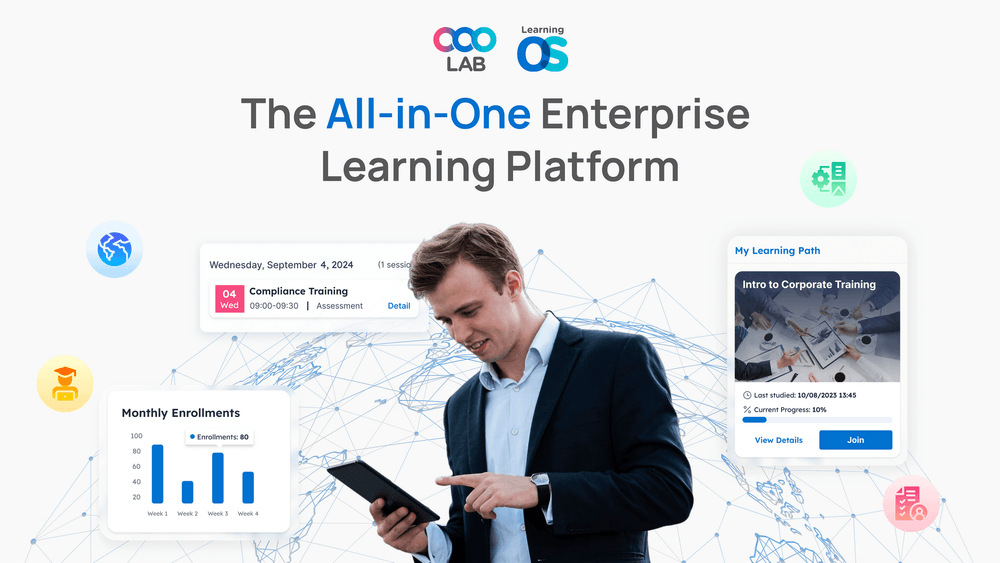

Strong leadership is a cornerstone of business success, shaping company culture, driving strategic goals, and fostering a productive workforce. However, leadership is not just about managing teams—it also plays a critical role in developing an organization’s skill quotient. The ability of leaders to cultivate and elevate employee skills directly impacts productivity, innovation, and long-term growth. This article explores the significance of leadership development in boosting an organization’s skill quotient, the best strategies for training leaders, and how companies can implement effective leadership programs.

A company's skill quotient represents the collective skills, competencies, and expertise of its workforce. This metric helps businesses gauge their ability to meet industry demands, adapt to market changes, and remain competitive. Organizations with a high skill quotient are better equipped to handle challenges, innovate, and grow sustainably.
Leadership sets the foundation for professional growth within an organization. Effective leaders inspire teams, encourage continuous learning, and create an environment where employees feel motivated to enhance their skills. Leadership development programs ensure that managers are equipped to mentor, coach, and develop their teams, ultimately boosting the organization's skill quotient.
>>> Read more: Skill Quotient Training Tool
>>> Read more: Why Is Skill Quotient Important for Employees?
Well-trained leaders can identify skills gaps within their teams and provide the necessary training and resources to address them. Leadership development programs equip managers with tools to evaluate team capabilities, set clear goals, and foster an environment of continuous learning. According to Elearning Industry, companies that invest in leadership training experience a 20% increase in employee performance.
Innovative thinking is a crucial part of leadership. Leaders who undergo continuous development learn how to foster creativity and problem-solving skills among their teams. Studies by Training Magazine show that organizations with strong leadership pipelines are 1.8 times more likely to innovate. This ability to think strategically and push for innovation contributes to an organization’s overall skill quotient.
Leaders play a significant role in employee satisfaction and retention. Employees who feel supported and mentored by their managers are more likely to stay engaged and committed to their roles. According to Skillsoft, companies that invest in leadership development see a 34% reduction in employee turnover, reinforcing the importance of strong leadership in maintaining a high skill quotient.
A learning culture starts at the top. When leaders prioritize self-improvement and skill development, they set an example for their teams. Leadership development programs emphasize the importance of continuous learning, which helps employees develop critical thinking, adaptability, and problem-solving skills—factors that contribute to a higher skill quotient.
Effective leadership involves making data-driven and strategic decisions that align with organizational goals. Leaders trained in decision-making frameworks can analyze complex situations, assess risks, and make informed choices. This not only improves business performance but also ensures that teams remain adaptable in a rapidly changing market.
Book Free Demo with us. Bring your Training and Learning to a new height with LearningOS.

>>> Read more: How To Measure Skill Quotient In Employees?
>>> Read more: Mastering Skill Quotient Measurement: Key Metrics and Strategies for Accurate Assessment
Before implementing a leadership development program, organizations should assess their current leadership capabilities and identify areas that need improvement. Conducting leadership assessments, 360-degree feedback surveys, and performance evaluations can help determine the key competencies that need to be developed.
Not all leaders require the same type of training. Organizations should tailor their leadership development programs based on experience levels and roles:
Emerging Leaders: Focus on foundational leadership skills such as communication, conflict resolution, and emotional intelligence.
Mid-Level Managers: Offer training on strategic thinking, team management, and cross-functional collaboration.
Senior Executives: Emphasize leadership in innovation, change management, and executive decision-making.
Modern organizations can utilize Enterprise LMS platforms to deliver leadership training effectively. An Enterprise LMS allows companies to offer personalized learning paths, track progress, and ensure leaders receive continuous development opportunities. By integrating e-learning modules, interactive case studies, and AI-driven recommendations, companies can create scalable leadership development programs that boost the organization's skill quotient.
Mentorship plays a vital role in leadership development. Pairing emerging leaders with experienced executives helps them gain real-world insights, build confidence, and develop leadership styles that align with company values. Regular coaching sessions also provide leaders with opportunities to refine their skills and receive feedback.
Leadership training should extend beyond formal courses. Organizations should create opportunities for leaders to apply their skills in real-world situations. Assigning cross-functional projects, leadership rotations, and high-impact challenges allows leaders to develop hands-on experience, increasing their confidence and expertise.
To ensure leadership programs are effective, organizations must track progress and make necessary adjustments. Key performance indicators (KPIs) such as employee engagement scores, leadership assessment results, and business performance metrics can help measure the impact of leadership training on the skill quotient. Regular feedback loops and course improvements ensure continuous progress.
>>> Read more: Social Quotient Vs Skill Quotient: A Comprehensive Analysis
>>> Read more: Skill Quotient Assessment Tools: Unlocking Employee Potential
Leadership development is a powerful driver of an organization’s skill quotient. By equipping leaders with the right skills, businesses can create a culture of continuous learning, improve employee performance, and drive innovation. Investing in leadership training programs ensures that organizations remain competitive, adaptable, and prepared for future challenges. Companies looking to enhance their workforce’s skill quotient should prioritize leadership development as a long-term strategic initiative.
At OOOLAB (pronounced 'uːlæb'), our mission is to make complex learning operations simple. We aim to positively impact the lives of over 1,000,000 learners and educators by the end of 2026.
OOOLAB's LearningOS provides educational institutions and corporate enterprises with an all-in-one solution to create and deliver engaging learning experiences.
We meet organizations' needs or support your growth. We provide undivided attention. We provide:
1. Dedicated success manager: We offer direct communication with a real human who'll discuss your enterprises unique learning operations and goals.
2. Personalized setup: Our team will help you transition to LearningOS on your schedule, one step at a time.
3. Around the clock support: Get help from us any time, and in any time zone.
We have recently launched a new AI training tool, Skill Quotient OS, designed to elevate hybrid training to new heights. It offers role-play exercises with scenarios and assessments. This tool can apply in sales training, corporate development and customer support training in any industry.
Reach out to us at: LinkedIn, Facebook, Instagram, Tiktok, X
1. What are the main benefits of LearningOS
Our platform is easy to use and automates all aspects of your learning operations. It efficiently manages complex tasks, allowing you to concentrate on delivering exceptional learning experiences.
2. What main features does LearningOS offer?
Our all-in-one software solution combines a Content Management System, a Learning Management System, content authoring tools, and a mobile friendly Learner Portal.
3. Can your platform be used for corporate enterprises?
Absolutely! LearningOS is an Enterprise LMS is a great fit for corporate learning. In fact, we have clients with up to 700,000 employees using LearningOS! Upskill your workforce by creating and assigning interactive eLearning content while effortlessly tracking employee progress.
4. Who currently uses your platform?
Our platform is currently used by over 120,000+ learners, parents, and employees across 21 countries worldwide!
5. What types of content options are available on your platform?
We offer ready-to-go curriculums for various educational purposes or our expert design team can build a custom course for you. We can also upload your existing learning materials and enhance them digitally.
6. What is unique about LearningOS?
Our platform, designed by educators for educators, provides you with all the tools you need to scale. Build and promote your own hybrid and blended learning courses and save money on licensing fees by owning your own proprietary content.
7. How can I get started?
Schedule a meeting with our experts and we’ll talk about how our platform can address your unique challenges and help to grow your business.